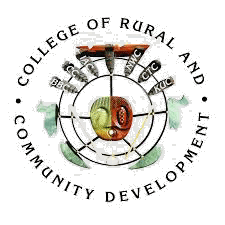Overview
This lesson should be used as reference for all other lessons in this course. Before you start Lesson 1, review the Unangan alphabet and sounds.
The Unangax̂‚ Alphabet
The Unangax̂‚ alphabet was originally developed by the Russian Orthodox Missionary Priest Ioann Veniaminov, with the help of the native Unangax̂‚ Chief Ivan Pan’kov of Tigalda beginning in 1825. This alphabet, a modified form of Russian Cyrillic, continued to be used through much of the twentieth century. In the early 1970s, a new orthography based on the Roman alphabet was developed with the help of the Norwegian linguist Knut Bergsland.
To date, there is no standard order for presenting the Unangax̂‚ alphabet. The alphabet is listed here generally follows standard alphabetical ordering; it is slightly different than the ordering presented in the Aleut Dictionary (Bergsland 1994), in that the Dictionary lists all long and short vowels together, and all aspirated sounds (sounds with [h]) together with the following written sound (e.g. [a] and [ha] are listed under [a], [m] and [hm] are listed under [m]). Some important exceptions to standard ordering are the following:
- The sound represented by [x] is similar to the sound represented by [G g], and is conventionally ordered after the latter (rather than after [W w]
- The sounds represented by [Ĝ‚ Ĝ‚] and [x̂‚ x̂‚] are ordered immediately after [X x]
- Some letters used in the Roman are either not used independently, such as [H h], or are rarely if ever used, such as [C c], [E e], [J j], [O o]
The Aleut Dictionary represented words and sounds found in all dialects of Unangam Tunuu. This course introduces the student to Eastern Unangam Tunuu, and more specifically to the variety spoken on the Pribilof Islands. This variety includes, for example, the sound [Z z], more often associated with Western than with Eastern Unangam Tunuu; it is listed separately here, although it is conflated with [S s] in the Aleut Dictionary.
There are several digraphs, or sounds that are represented by two letters: [Ch ch], [Ng ng], and various aspirated sounds (e.g. [Hm hm]. To distinguish the digraph [Ng ng] and the sound that it represents from the two separate letters [n] and [g] and the sounds that they represent, an apostrophe is used. Thus, the word angalix ‘day’ consists of the sounds /a ng a l i x/; the word an’gix̂‚ ‘breath’ consists of the sounds /a n g i x̂‚/.
The apostrophe is also used to represent a sound that has been dropped during pronunciation. For example, in the word aqatal’kaĜ‚ing ‘I don’t know it’, the apostrophe symbolizes that a speaker has dropped a sound, in this case, /a/: in deliberate or slow speech, this word would be pronounced aqatalakaĜ‚ing.
The order of the symbols used to represent Unangan sounds:
A a, Aa aa, B b, Ch ch, D d, F f, G g, X x, Ĝ‚ Ĝ‚, x̂‚ x̂‚, I i, II ii, K k, L l, M m, N n, Ng ng, P p, Q q, R r, S s, T t, U u, V v, W w, Y y, Z z
The Unangax̂‚ Sounds
Vowels
There are three short and three long vowels in Unangam Tunuu: i, a, u, and ii, aa, uu. There are no diphthongs, or combinations of different vowels.
[a] is pronounced as in the English words ‘lava’, ‘ah’:
| asax̂‚ | ‘name’ |
| amaya | ‘and’ |
| alqutax̂‚ | ‘what’ |
| Tataam ix̂‚tada. | ‘Say it again!’ |
[aa] is pronounced as in the English word ‘father’, but the vowel is a bit longer:
| aalax | ‘two’ |
| adaadax̂‚ | ‘father’ |
| ayagaadam anaadaa | ‘the girl’s mother’ |
[i] is pronounced as in English ‘hit’:
| idigax̂‚ | ‘sweet’ |
| ilgux̂‚ | ‘grandchild’ |
| chitilix | ‘to get married’ |
[ii] is pronounced as in English ‘bead’, but the vowel is a bit longer:
| iis’lilix | ‘to repeat, do something again’ |
| chikiidax̂‚ | ‘brother-in-law’ |
| buulkam chinglii | ‘hot bread roll’ |
[u] is pronounced as in English ‘fruit’:
| unguchilix | ‘to sit down’ |
| tunux̂‚ | ‘word, language’ |
[uu] is pronounced as in English ‘do’, but the vowel is a bit longer:
| uuznax̂‚ | ‘dinner’ |
| tuutkax̂‚ | ‘aunt’ |
| Annagan aniqduu | ‘Anna’s child’ |
In Context
Vowels are sometimes pronounced differently depending on what other sounds are next to them. For example, the combination [ay] at the end of a word is that it is pronounced [e], as in ‘made’:
| way | ‘this’ |
| ingay | ‘that’ |
In addition to these vowels, the interrogative particle at the end of a yes/no question is written ee and pronounced as in ‘eh’:
| ee | ‘eh?’ |
Consonants
Unangam Tunuu uses many letters of the English alphabet, and while these often represent the same sounds, or almost the same sounds, as the English ones, they sometimes do not, so it is important to pay attention to the pronunciations given here. Unangam Tunuu also has several sounds not found in English.
[ch] is pronounced as in English ‘chip’:
| chaaskax̂‚ | ‘cup’ |
| quchxaan | ‘sometimes’ |
[d] in native Unangan words is pronounced as ‘th’ in English ‘that’:
| dax̂‚ | ‘eye’ |
| idigax̂‚ | ‘something sweet’ |
Sometimes, [d] sounds like the initial sound in the English word ‘thick.’ This happens either in the middle of a word, when [d] is followed by a consonant like [q] or [k]. It can also happen at the end of a word after the loss of a final vowel. For example, in word forms ending with —da, [a] is often not pronounced, and [d]:
| adqung | ‘my finger’ |
| Kiin ingay ix̂‚tad(a)! | ‘Say: “Who is this?’’ |
| nung kangchix̂‚tid(a)! | ‘Explain (or translate) to me!’ |
In loan words (mostly from Russian or English), [d] is pronounced as in the English word ‘dad’:
| Dimiitrix̂‚ | ‘Dimitri’ (name) |
| Fiyuudurax̂‚ | ‘Theodore’ (name) |
The letter [g] in native Unangan words represents a sound that is not found in English. It is pronounced with the tongue in the same place as it is when making the English sound [g] as in ‘girl’, but the tongue does not stop the air from flowing.
| gulaayalix | ‘to go on a walk’ |
| agiitalix | ‘together with’ |
| ayagax̂‚ | ‘woman’ |
In the middle of a word, when it is next to a [u], the sound [g] can sound like [w]:
| tugax̂‚ | ‘stroke, blow’ |
| kinguugigusa | ‘younger’ |
The letter [x] represents a sound that is not found in English. It is pronounced like Unangan [g], except that the vocal chords are not vibrating. Another way to think about it is that it is that it is pronounced like [k] as in English [kite], but the tongue does not stop the air from flowing.
| xliibax̂‚ | ‘bread’ |
| txin | ‘you’ |
| asxinux̂‚ | ‘daughter’ |
| alix | ‘or’ |
the letter [ĝ] represents a sound that is not found in English. It is pronounced like [g], but with the tongue further back in the mouth.
| aĝilix | ‘to give’ |
| naĝux̂‚ | ‘son-in-law’ |
| qaĝaalakux̂‚ | ‘thank you’ |
the letter [x̂‚] represents a sound that is not found in English. It is pronounced like [x], but with the tongue further back in the mouth.
| x̂‚ulustaakax̂‚ | ‘bachelor fur seal’ |
| ix̂‚talix | ‘to say’ |
| ix̂‚am(a)nakux̂‚ | ‘good’ |
[k] is pronounced as in English ‘kite’:
| kiin | ‘who’ |
| akux̂‚ | ‘(he/she/it) is’ |
| kukax̂‚ | ‘grandmother’ |
[l] is pronounced as in English ‘lead’:
| latux̂‚ | ‘grandfather’ |
| inulgalix | ‘to be eaten, consumed’ |
| ilan | ‘in’ |
Although [l] is generally not found at the end of a word in the Eastern dialect of Unangam Tunuu, speakers frequently do not pronounce the final syllable of verbs, this can result in an [l] as the final sound; some borrowed words, including Russian names, also have a final [l]:
| Raxiiyl | ‘Rachel’ (name) |
| sxatxin agiital’ chaayuux̂‚tax̂‚ qulaan | ‘in order to have tea with one’s own family’ |
[m] is pronounced as in English ‘man’:
| malix | ‘to do’ |
| amaya | ‘and’ |
| tataam | ‘again’ |
[n] is pronounced as in English ‘neat’:
| Nadiisdax̂‚ | ‘Nadya’ |
| anaadax̂‚ | ‘mother’ |
| Altxin? | ‘And you?’ |
[ng] is pronounced as in English ‘song’; unlike English, this sound can be found anywhere in the word:
| ngaan | ‘to (him/her/it)’ |
| angunax̂‚ | ‘many, multiple’ |
| ting | ‘I, me’ |
[q] represents a sound not found in English. It is pronounced like [k], but with the tongue further back in the mouth:
| qalix | ‘to eat’ |
| qilagan | ‘tomorrow’ |
| aqalix | ‘to arrive’ |
| aniqdux̂‚ | ‘child’ |
[s] is pronounced as in ‘sand.’ Although it can be found word-finally in the Atkan dialect of Unangam Tunuu, it is not found in this position in the Eastern dialect:
| sanalix | ‘to be enough’ |
| asaĝalix | ‘to be called’ |
[t] is pronounced as in English ‘stop’ or ‘hot’:
| taangax̂‚ | ‘water’ |
| anuxtalix | ‘to want, to need’ |
[y] is pronounced as in English ‘youth’:
| yaayax̂‚ | ‘uncle’ |
| wayaam | ‘today’ |
| tuuyulix | ‘to be sad, quiet’ |
The sound [y] affects the preceding sound [a] when the two appear in combination at the end of a word in the speech of the Pribilof Islanders; the result is a diphthong sound as in English ‘way’:
| Way kalikax̂‚. | ‘This is a book.’ |
| Kiin amay Suufya? | ‘And who [is] Suufya?’ |
[w] is pronounced as in English ‘why’:
| waligan | ‘here, right here’ |
| awakun | ‘we/they are working’ |
Aspirated consonants, or consonants that had an [h] sound, were part of the Unangam Tunuu sound system. While they are still common in Atkan, there are only a few words left in the Eastern dialect that seem to maintain aspiration:
| quhmax̂‚ | ‘white’ |
Borrowed sounds
In addition to these sounds, others are found in words that Unangam Tunuu has borrowed, either from English or from Russian.
[b] is pronounced as in English ‘brother’:
| buulkax̂‚ | ‘bread roll’ |
| xliibax̂‚ | ‘bread’ |
[f] is pronounced as in English ‘father’:
| figax̂‚ | ‘fig’ |
| kuufyax̂‚ | ‘coffee’ |
[p] is pronounced as in English ‘apple’:
| prustuuyax̂‚ | ‘plain, simple’ |
| apalchiinax̂‚ | ‘orange’ |
[r] can either be pronounced as in the Russian pronunciation of [r], with a little tongue trill, or it can be pronounced as in English [r]:
| praanikax̂‚ | ‘pastry, cookie’ |
| sistrax̂‚ | ‘sister’ |
[v] is pronounced as in English ‘vain’:
| Viira | ‘Vera’ (name) |
| Paavilax̂‚ | ‘Paul’ (name) |
[z] is pronounced as in English ‘zebra’:
| ziitkax̂‚ | ‘weak, thin (of tea or soup)’ |
| izuumax̂‚ | ‘raisin’ |

